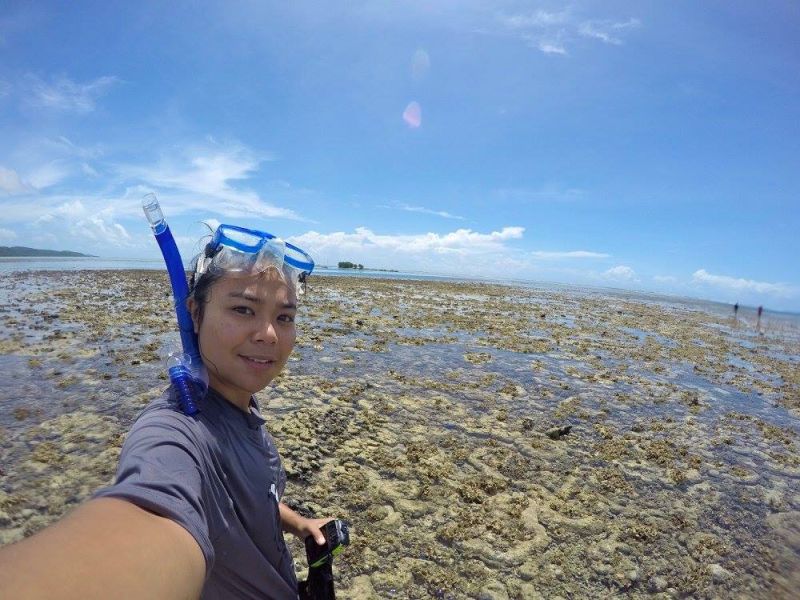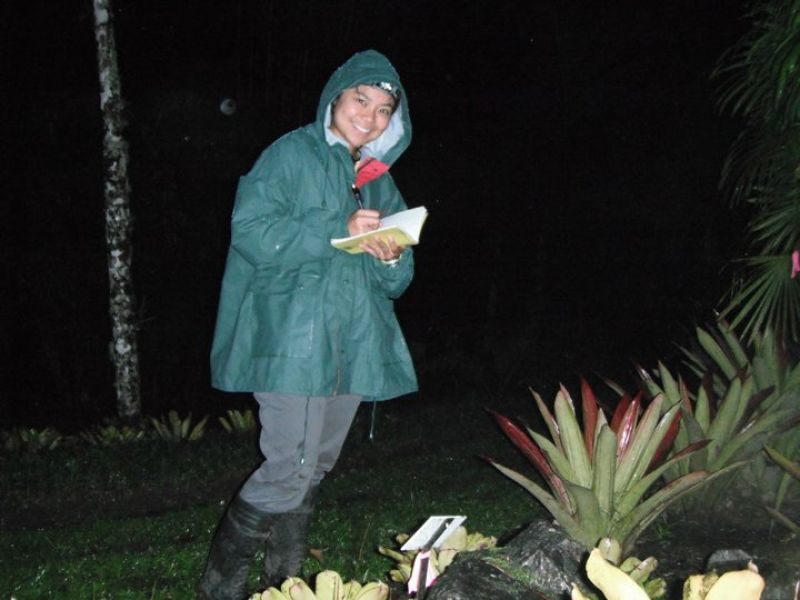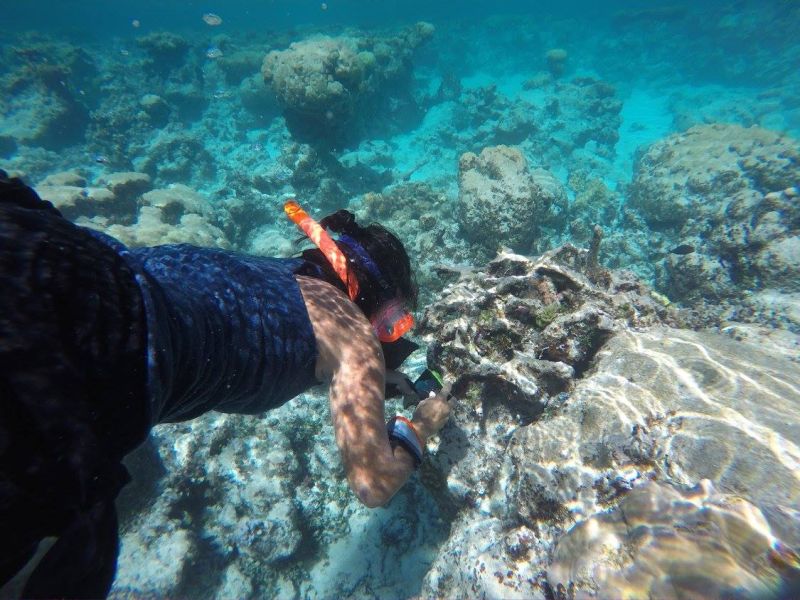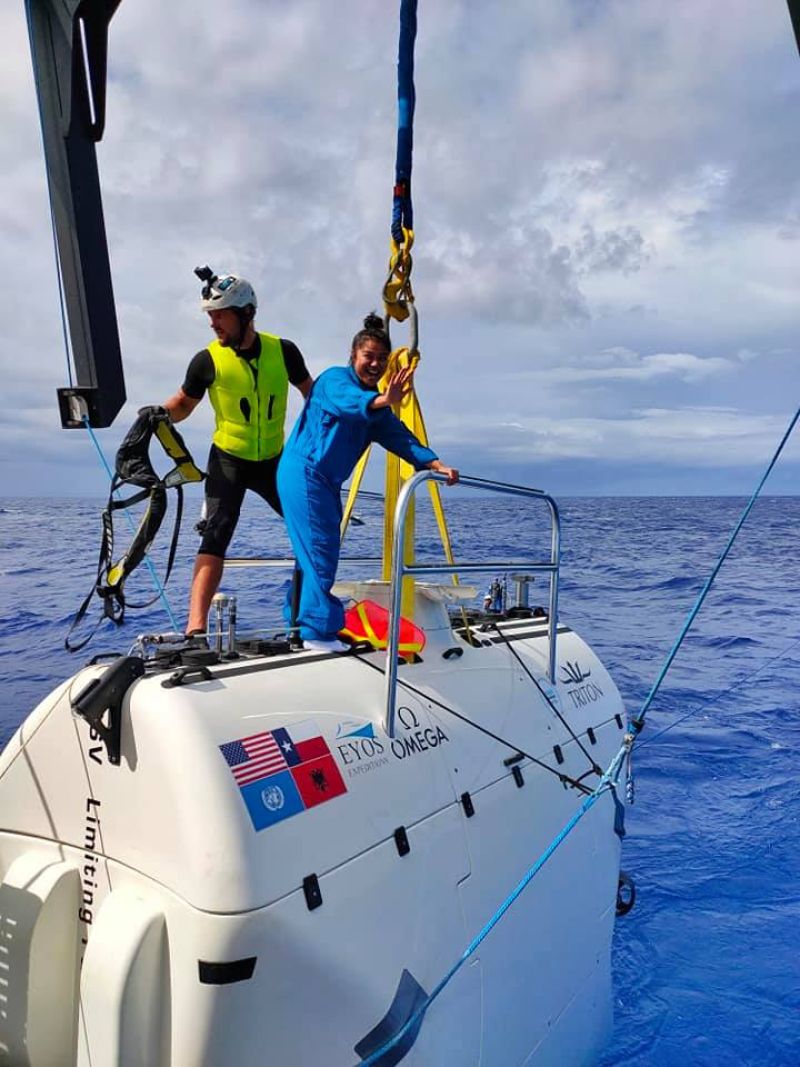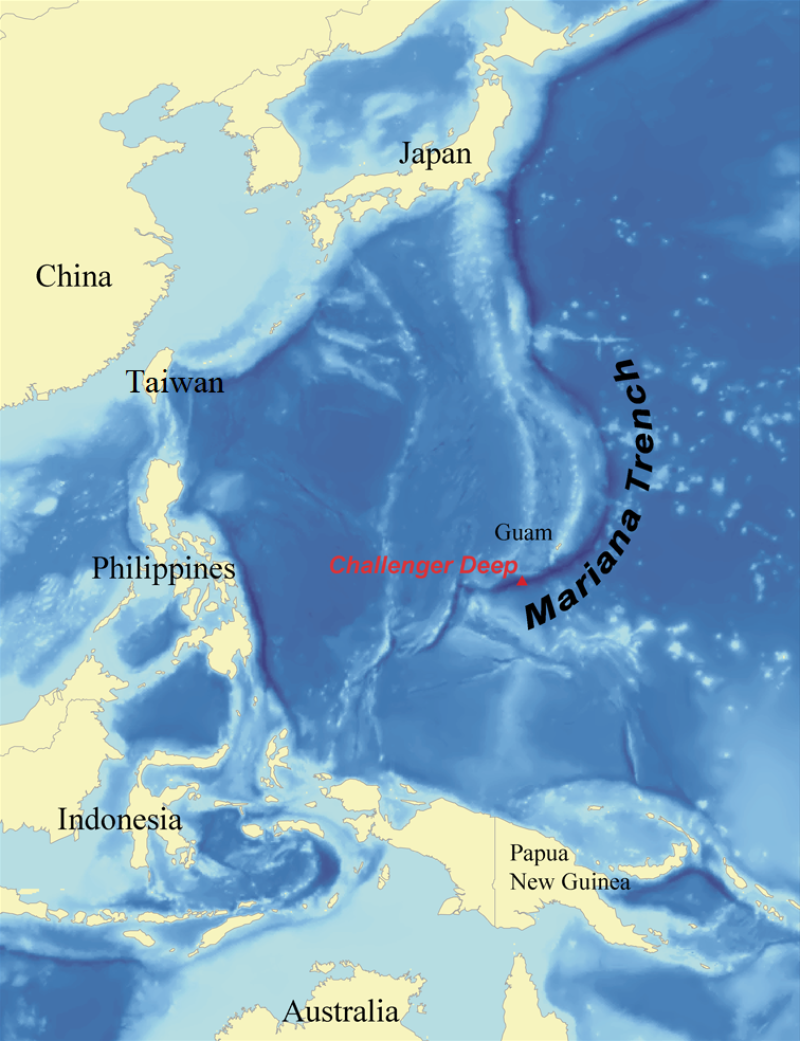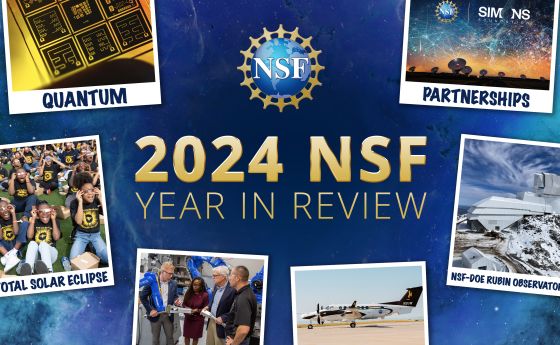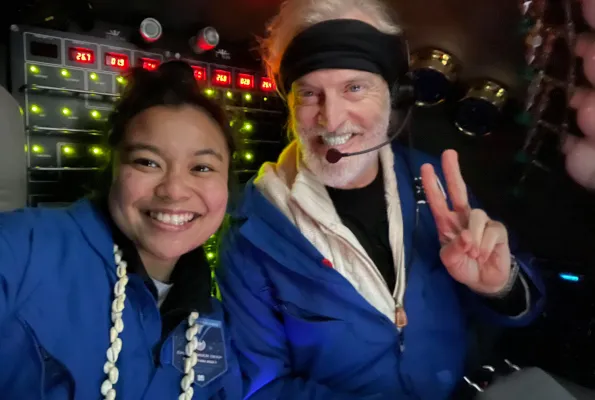
#NSFStories: Voyage to the bottom of the sea
Twelve people have been to the moon, but until 2019, only three people had been to the deepest part of the ocean: Challenger Deep, a trench off the Mariana Islands that lies nearly 11 kilometers below the surface of the western Pacific Ocean. Recently, Nicole Yamase became the first Pacific Islander to visit it.
A student at the University of Hawaiʻi at Mānoa and a citizen of the Federated States of Micronesia, Yamase became interested in climate change in high school and realized that she wanted to study conservation and the environment. The waters controlled by the U.S.-affiliated Pacific Islands -- American Samoa, the Commonwealth of the Northern Mariana Islands, the Federated States of Micronesia, the Republic of the Marshall Islands and the Republic of Palau -- encompass 2,000 islands and millions of square miles of ocean and contain many unique environments and marine ecosystems. While most of the islands are small, the combined exclusive economic zones of the region encompass an area four times the size of the contiguous United States.
Marine- and land-based ecosystems in the Pacific Islands are home to some of the most pristine habitat in the world and possess tremendous, unique biodiversity, but they are also already experiencing the impacts of climate change. Low-lying islands, coastal areas and coral reefs are particularly vulnerable to rising sea levels and increased storm activity, which cause flooding and erosion. Climate change is also affecting fisheries -- an important part of Pacific Islanders' diets -- and threatening many species. Over the coming decades, the impacts of climate change are expected to become more widespread and severe.
Sparking an interest in climate science
Until recently, environmental biology and ocean sciences were not considered a viable career option by Pacific Island peoples, and there has historically been little local scientific capacity. A program funded by the U.S. National Science Foundation developed scientific curricula at the secondary school to college level aimed at two-year colleges and minority-serving universities. The program also provides professional development of secondary school teachers and community college faculty. This initiative is helping to provide Pacific Islanders with the scientific skills and resources that allow local communities to tackle the effects of climate change themselves and help protect their islands and coastal waters.
At the end of her first year at Chaminade University of Honolulu, Yamase participated in a long running NSF-funded internship called the Undergraduate Research and Mentoring in the Biological Sciences Program, also known as URM, at University of Hawaiʻi at Mānoa, led by Michael Hadfield. This experience helped her decide her career path. While snorkeling around the island of Oʻahu, she surveyed the abundance of fish -- particularly the yellow tang -- to measure the impact of the ornamental fish trade. Her research found that the numbers of fish favored by the aquarium trade were low, and that at some locations, such as Waikīkī, the fish in the reefs were heavily affected.
After this experience gave her "a taste of the ocean," she wanted to learn more about the terrestrial side of environmental and conservation research to see which path she wanted to take. The following summer, she took part in the NSF-funded Native American and Pacific Islander Research Experience in Costa Rica. She found that Costa Rica reminded her of her childhood on the Micronesian island of Pohnpei. "It was like home, being in the forest."
In Costa Rica, she looked at the territorial behavior of tiny tink frogs -- so called because of the "tink tink" sound of their calls. "They're territorial and have calling sites. They also come out at night, so that's when I did my field work. I would have to look for them in the bromeliads and to see how big their territory was based on their 'tink-ing.'"
After that summer, she decided that she should try to narrow her interests and specialize. "Both experiences were amazing, but really, I was leaning towards the ocean more."
During her last year at Chaminade, she particpated in the URM program again where she studied the native green alga Microdictyon setchellianum, which is highly abundant in the Northwestern Hawaiian Islands. This project slowly developed into one of the chapters for her dissertation.
Becoming a STEM advocate for Pacific Islanders
Through her internship programs, Yamase was able to make use of scholarship funds to attend scientific conferences. "It was from the experience of going to these conferences that I realized there's not many Pacific Islanders in science, because when we saw each other, it was so rare" she said. Yamase is now an advocate for STEM education for Pacific Islanders and participation in these summer internships. "Being in these NSF internships, with other Pacific Islanders who share the same passion, it's fuel for us. We need more of us. It's what has kept me going. If you're always the odd one out, it's much harder than if you're in a community."
These experiences also gave Yamase and fellow Pacific Islanders the confidence to speak out, participate and engage. "These summer internships really made us step up -- presenting in front of a lot of people, talking to doctorates, talking to older scientists," she said. "These NSF internships played a huge part in my becoming a spokesperson and a promoter for these opportunities that are out here for us."
Yamase is currently doing her PhD research on the ecophysiology of native marine plants on shallow reefs.
Voyage to the bottom of the ocean
In March, Yamase received the opportunity of a lifetime. Adventurer and submersible pilot Victor Vescovo had organized several recent submersible expeditions to the Mariana Trench and thought it was important, because Challenger Deep is in the waters of the Federated States of Micronesia, or FSM, that a citizen of the FSM should have the opportunity to visit this famous ocean location. Yamase was nominated by the Micronesian Conservation Trust and was selected by Victor as a representative for Micronesia on his expedition.
"It was so fast," said Yamase. "I left Hawaii and got to Guam in the evening of the next day. A few days later, we headed out to the Mariana Trench in the morning and arrived around 5 a.m. the following day. The submersible dove by 10 a.m. and we came back up to the surface at 8 p.m.. Three days later I came back to Honolulu. I'm still processing what happened."
The remoteness of the location should not be underestimated -- until 2019 only three people had visited Challenger Deep: Jacques Picard and Don Walsh in 1960 and James Cameron in 2012. Yamase was only the 20th person to have visited Challenger Deep at the time of her descent, the fourth female, the second youngest and the first Pacific Islander.
"The first Pacific Islander [to visit the trench]. I take a lot of pride in that," said Yamase. In fact, she said, representing her community was more intimidating than preparing for the voyage to the trench.
"That morning I was just chill. It was almost spiritual, I felt like I was going home. I'm going to go visit a relative, but just underwater. I felt so at peace."

